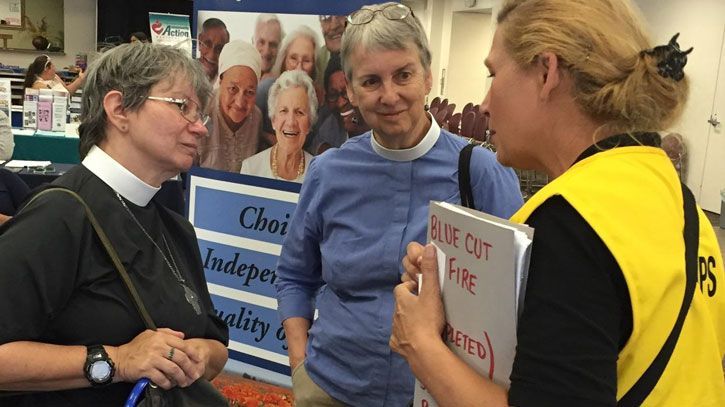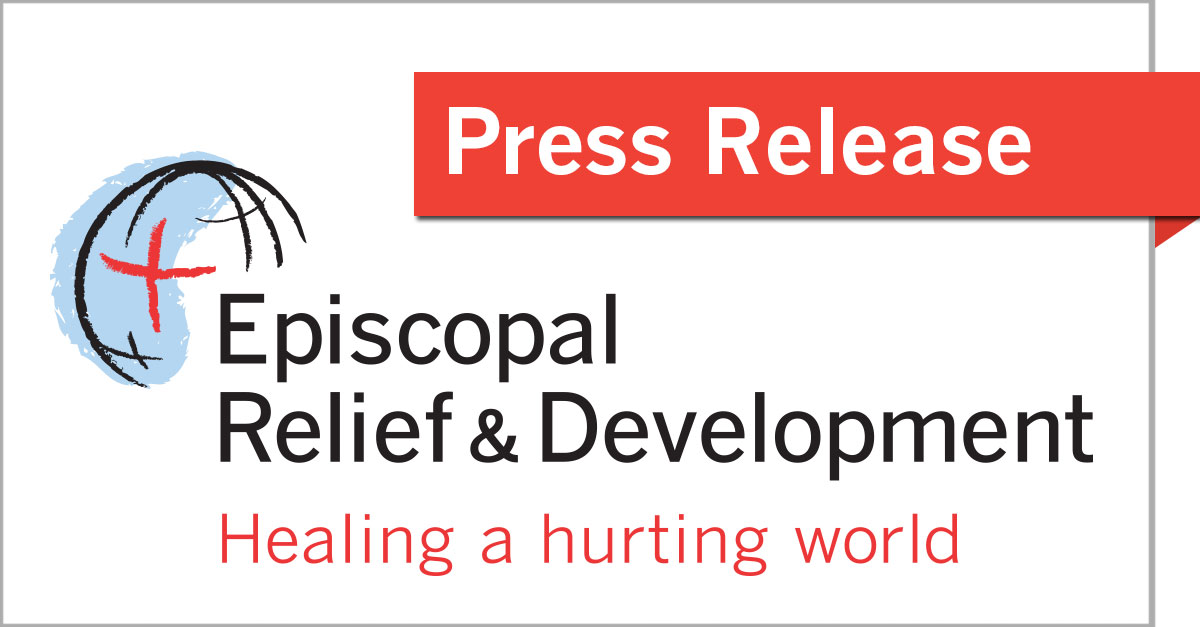Episcopal Relief & Development Supports California Fire Response

 August 24, 2016
August 24, 2016
Episcopal Relief & Development is supporting the disaster response efforts of the Episcopal Diocese of Los Angeles, where crews have recently contained the Blue Cut fire in the hills north of San Bernardino. Over the past week, the blaze burned nearly 57 square miles of land and destroyed over 100 homes. More than 82,000 people had been evacuated.
According to The Very Rev. Canon Michael Bamberger, Disaster Co-Coordinator for the Diocese of Los Angeles, the diocese is partnering with Episcopal Relief & Development to provide gift cards for immediate needs to two groups of affected people: those who are displaced either as short-term evacuees or longer-term due to the loss of their homes, and those who are newly unemployed due to businesses being lost or damaged in the fire.
Local churches are responding as well, including St. Timothy’s Episcopal Church in Apple Valley and St. Hilary’s Episcopal Church in Hesparia, closest to north side of the burn area. St. Peter’s Episcopal Church in Rialto is also responding to needs of those evacuated from the Lytle Creek area of the fire. St. Mark’s Episcopal Church in Upland, outside the burn area, hosted a training for disaster responders that covered “Disaster 101” and the emotional life-cycle of a disaster, preparing them to minister to those impacted.
“We always encourage churches to look to their most vulnerable neighbors in this time of need,” Bamberger said. “The recovery process will be long, and our churches will continue to serve their neighbors.”
Bamberger stated that four of the six dioceses across the state of California were currently experiencing fires, and that this is just the beginning of what looks to be a “very grim” fire season. “There’s a direct connection between this enhanced fire season and the long-term drought in California,” Bamberger said. “We’re under water conservation measures and hoping for better weather.”
Other fires include the Clayton fire in Lake County (Diocese of Northern California), the Chimney fire near San Luis Obispo (Diocese of El Camino Real) and the Erskine fire near Lake Isabella (Diocese of San Joaquin). A map of current fires in California is maintained at fire.ca.gov.
Bamberger reported that all of the California Diocesan Disaster Coordinators participated in a conference call two weeks ago to brief each other on their local situation and that they continue to stay in contact. He noted that Episcopal Relief & Development Preparedness Training Coordinator Lura Steele is coordinating these conversations to ensure that leaders know what’s going on in other dioceses.
“I am extremely grateful for the leadership of the diocesan disaster coordinators around California,” said Katie Mears, Director of Episcopal Relief & Development’s US Disaster Program. “They have contributed immensely to regional preparedness and response, supporting and training local clergy and lay volunteers to care for the most vulnerable in their communities.”
Please support Episcopal Relief & Development’s response to the devastating wildfires across California by donating to the US Disaster Response Fund, and pray for all those impacted.
For over 75 years, Episcopal Relief & Development has served as a compassionate response to human suffering in the world. The agency works with more than 3 million people in nearly 40 countries worldwide to overcome poverty, hunger and disease through multi-sector programs, using the Sustainable Development Goals (SDGs) as a framework. An independent 501(c)(3) organization, it works closely with Anglican Communion and ecumenical partners to help communities create long-term development strategies and rebuild after disasters.
Header image: courtesy of The Very Rev. Canon Michael Bamberger. Deacon Celeste Stump (left) and Deacon Catherine Wagar (center) from the Episcopal Diocese of Los Angeles talk to one of the county disaster staff at the local assistance center in Victorville, California, which is serving people affected by the Blue Cut fire.


